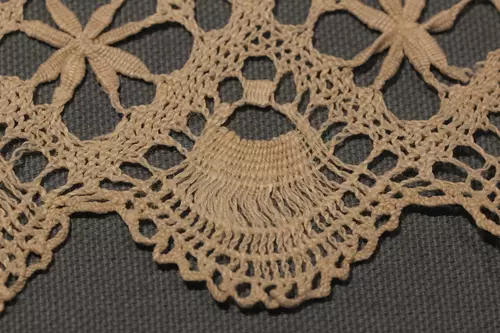
Lace, originating in Europe during the late 15th and early 16th centuries, evolved into a symbol of wealth and status. Renowned for its intricate patterns, needle lace from Italy and bobbin lace from Flanders gained prominence. Despite technological advancements like lace-making machines in the 19th century, crafting high-quality lace remains a labor-intensive and costly endeavor.
Like this:
Like Loading...

This trim features a zig-zag design filled with star-shaped motifs. Notably, it has triangular peaks at the upper edge where it attaches to the Altar Linen. An interesting detail is the deep hem of the linen, matching the trim’s depth—around 5 to 6 inches. While this may seem unusual to modern eyes, older reference books mention long Fair Linens having deep hems, especially if they reach close to the floor. The added weight from a deep hem likely contributes to the Fair Linen hanging well.
Like this:
Like Loading...

The title is Lace for Church Use by Marie-Clare Downham.
Like this:
Like Loading...

…types of lace used in the church…
Like this:
Like Loading...

Lace, and variations is often applied to the hemline and sleeves of vestments such as a rochet which forms part of the choir robes. The lace can vary with styles of pattern, and materials, being sometimes a little heavier and bolder, to being something very light and airy.
Like this:
Like Loading...






You must be logged in to post a comment.